23/03/2021
Aliendres, A.
¡Apreciados amigos de Foodies Bee Hive!
Dear Friends of Foodies Bee Hive! Yo, Aura Aliendres, desde la comodidad y armoniosa paz de mi hogar, situado en Maturín, estado Monagas, provincia perteneciente a la región ecológica denominada Llanos Altos en el Oriente de Venezuela; les envío un saludo lleno de salud, bienestar y abundancia.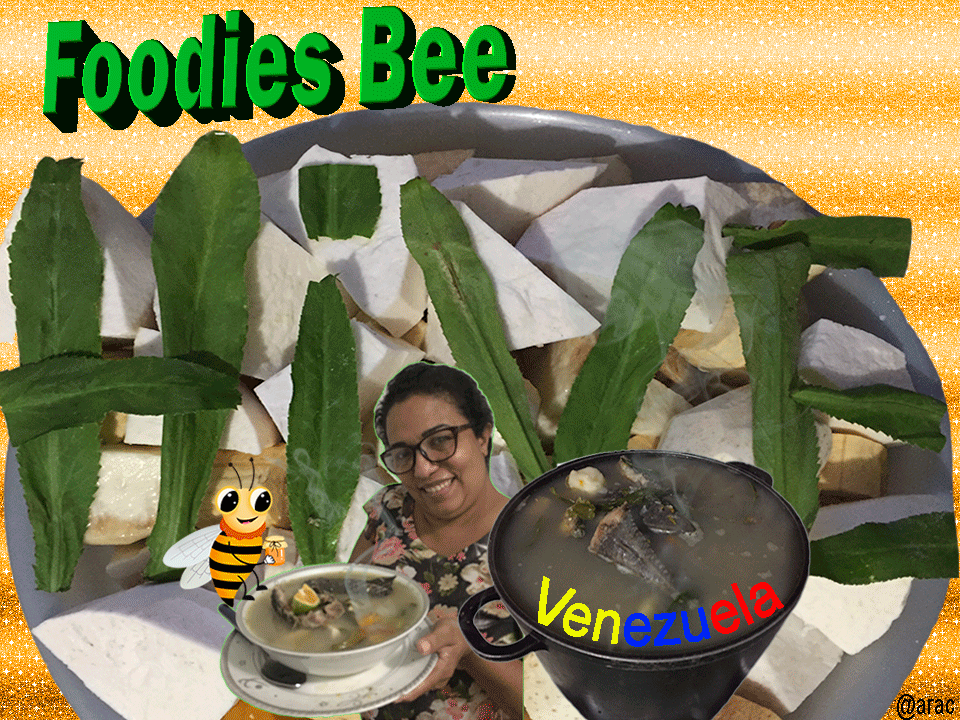 Siendo propicia la ocasión respecto a mi ubicación geográfica, para compartir contigo una de mis recetas de cocina que la aprendí de mi amada abuela; quien añoraba cocinar sopas de pescado fresco, sobre todo de especies dulceacuícolas como el Hypostomus plecostomus, el cual tiene múltiples nombres de acuerdo al ámbito geográfico; en la región oriental de Venezuela se le conoce como guaraguara, en otras zonas del territorio nacional, incluso en países vecinos se le llama chupapiedras, corroncho, pez diablo, pez gato, entre otros. No obstante, en mi pueblo le decimos guaraguara y cuando de sopa se trata, en el argot criollo hablamos de hacer un sancocho de guaraguara.
Siendo propicia la ocasión respecto a mi ubicación geográfica, para compartir contigo una de mis recetas de cocina que la aprendí de mi amada abuela; quien añoraba cocinar sopas de pescado fresco, sobre todo de especies dulceacuícolas como el Hypostomus plecostomus, el cual tiene múltiples nombres de acuerdo al ámbito geográfico; en la región oriental de Venezuela se le conoce como guaraguara, en otras zonas del territorio nacional, incluso en países vecinos se le llama chupapiedras, corroncho, pez diablo, pez gato, entre otros. No obstante, en mi pueblo le decimos guaraguara y cuando de sopa se trata, en el argot criollo hablamos de hacer un sancocho de guaraguara.
Sobre la Guaraguara
Venezuela posee una potencial riqueza hidrográfica que se manifiesta en sus bondadosos cuerpos naturales de aguas subterráneas y superficiales, siendo el caudaloso río Orinoco su mayor tributario y del cual se ramifican diversos canales que forman caños y ríos de menor proporción; el eje suroccidental noreste se corresponde con esta zona de influencia hidrobiológica y es la cuna productora de la Guaraguara.
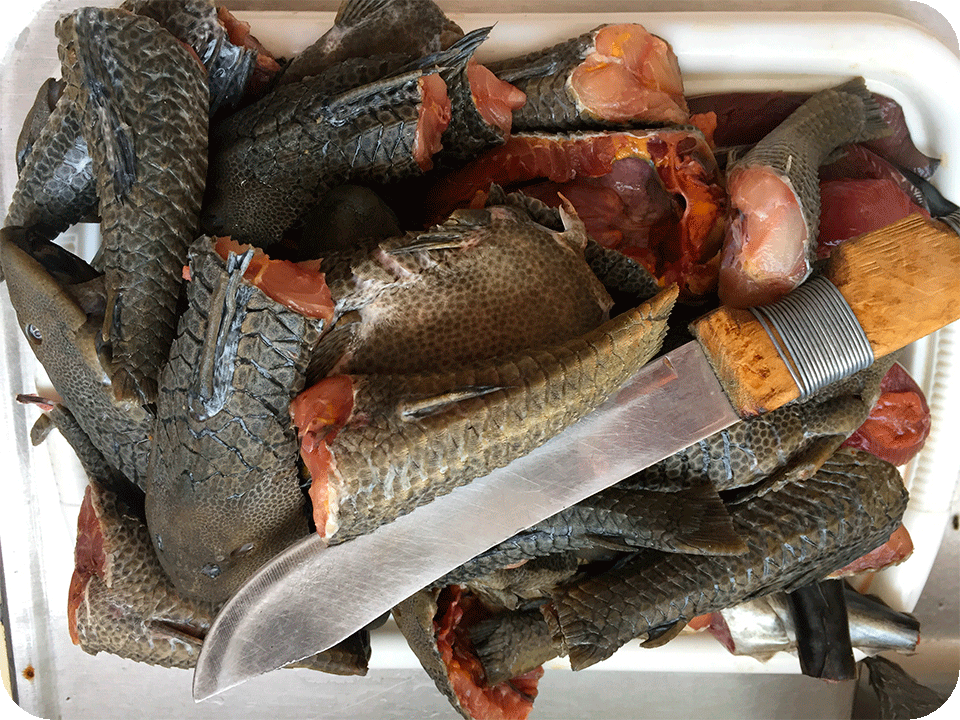 El naturalista y científico Carlos Linneo (1758) registró este pez en el orden de los Siluriformes, género Hypostomus y especie plecostomus. Su procedencia natural se atribuye a la región de América del Sur donde su carne cuenta en la dieta de sus pobladores, ya que su poco nivel de grasas en el tejido y abundante riqueza en proteínas le agregan interés económico, social y cultural; de hecho, en la población de San Antonio de Capayacuar, zona norte del estado Monagas, se rinde homenaje a este exquisito pez con una tradicional danza entonada con instrumentos musicales como el cuatro, tambor y maracas.
El naturalista y científico Carlos Linneo (1758) registró este pez en el orden de los Siluriformes, género Hypostomus y especie plecostomus. Su procedencia natural se atribuye a la región de América del Sur donde su carne cuenta en la dieta de sus pobladores, ya que su poco nivel de grasas en el tejido y abundante riqueza en proteínas le agregan interés económico, social y cultural; de hecho, en la población de San Antonio de Capayacuar, zona norte del estado Monagas, se rinde homenaje a este exquisito pez con una tradicional danza entonada con instrumentos musicales como el cuatro, tambor y maracas.

Ingredientes
Paso 5.
Mientras hemos pelado y cortado las verduras y vegetales, así como sofrito los aliños, el agua debe haber hervido; entonces, es el momento ideal para agregar el sofrito conjuntamente con verduras y vegetales. Se deja cocinar por 35 minutos, manteniendo la olla tapada. Agregue la sal.
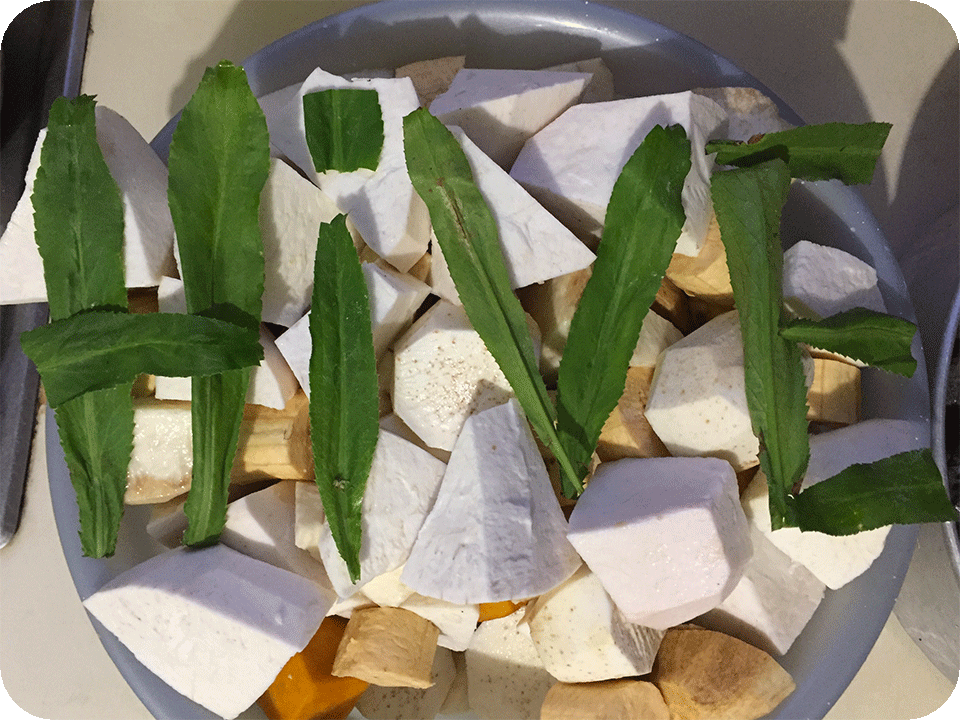 El decorativo HIVE lo elaboré con hojas frescas y aromáticas de culantro, provenientes de mi pequeño cultivo en el jardín.
El decorativo HIVE lo elaboré con hojas frescas y aromáticas de culantro, provenientes de mi pequeño cultivo en el jardín.
Paso 6.
Una vez que la verdura esté próxima a ablandarse, es momento de agregar la carne de pescado.
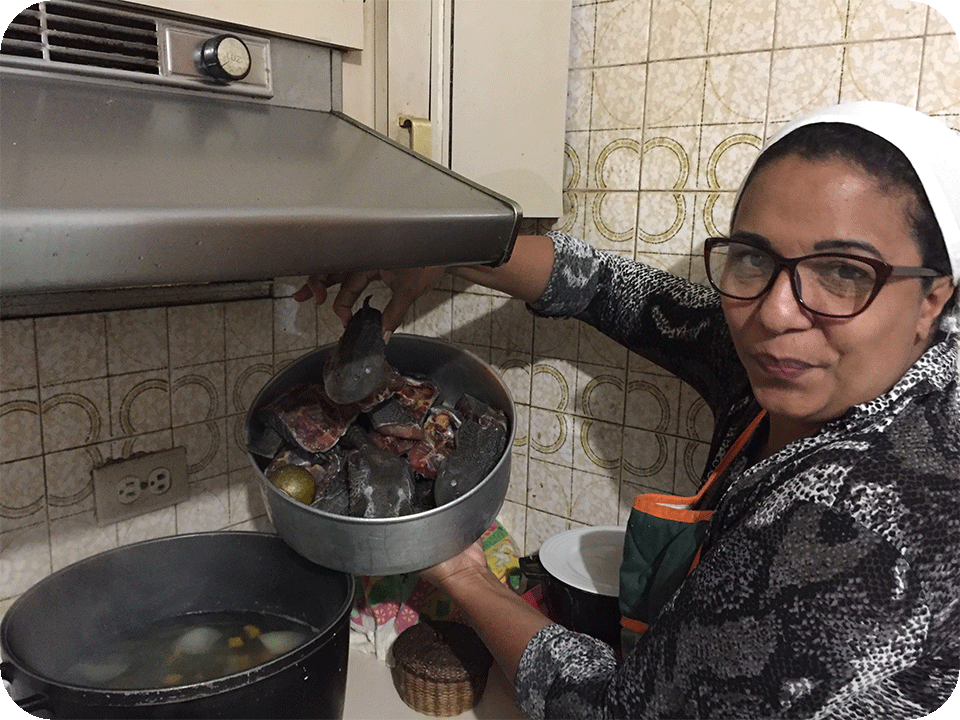 Cabe resaltar que esta especie dulceacuícola por lo general es un poco dura, así que por esto se añade antes que la verdura se haya ablandado completamente; como puedes darte cuenta, es diferente a la preparación de otras sopas con tipos de pescado con escamas, cuyo tejido cárnico es más blando.
Cabe resaltar que esta especie dulceacuícola por lo general es un poco dura, así que por esto se añade antes que la verdura se haya ablandado completamente; como puedes darte cuenta, es diferente a la preparación de otras sopas con tipos de pescado con escamas, cuyo tejido cárnico es más blando.
Paso 7.
Una vez que el pescado se haya cocinado por 15 minutos, se agrega el jugo de dos limones y añade unas hojas de culantro para terminar de dar el punto aromático y sabor característico de este caldo.
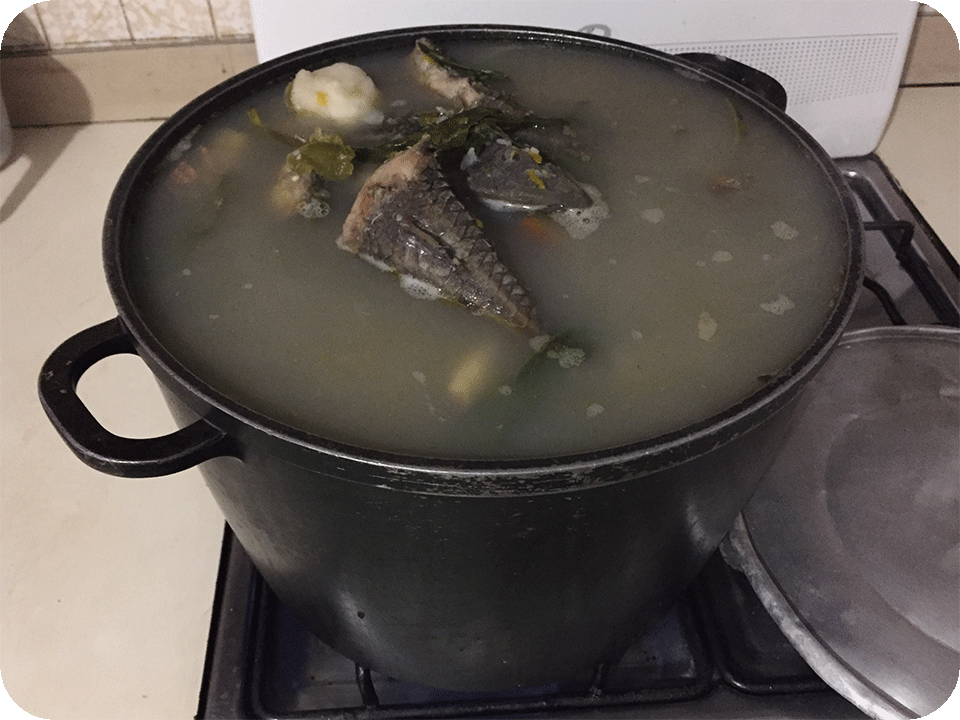
Paso 8.
Habiendo esperado unos 5 minutos después de agregar el jugo de limón y hojas de culantro, este exquisito caldo de guaraguara está listo para servir y degustar.
 Esta ha sido mi experiencia respecto a la preparación de la sopa de guaraguara.
This has been my experience with the preparation of guaraguara soup.
Esta ha sido mi experiencia respecto a la preparación de la sopa de guaraguara.
This has been my experience with the preparation of guaraguara soup.

Sobre las fotografías
Todo el material fotográfico y recurso multimedia pertenece a la autora, quien utilizó cámara de dispositivo iPhone 6 para realizar las capturas; de igual manera, el editor Photoshop CS6 para la creación de la imagen principal.
La imagen de la abeja en formato PNG, se extrajo del sitio clipart de insectos png de es.pngtree.com
All the photographic material and multimedia resources belong to the author, who used the camera of an iPhone 6 device to take the pictures; likewise, the Photoshop CS6 editor was used to create the main image.
The image of the bee in PNG format was extracted from the site clipart de insectos png de es.pngtree.com
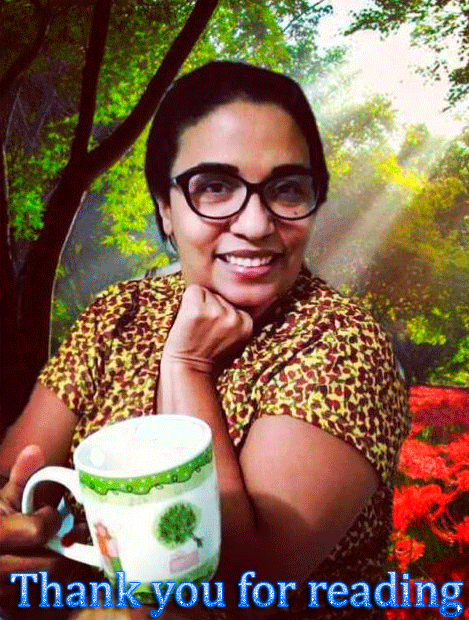
Dear Friends of Foodies Bee Hive! Yo, Aura Aliendres, desde la comodidad y armoniosa paz de mi hogar, situado en Maturín, estado Monagas, provincia perteneciente a la región ecológica denominada Llanos Altos en el Oriente de Venezuela; les envío un saludo lleno de salud, bienestar y abundancia.
I, Aura Aliendres, from the comfort and harmonious peace of my home, located in Maturin, Monagas state, province belonging to the ecological region called Llanos Altos in the East of Venezuela; I send you a greeting full of health, well-being and abundance.
 Siendo propicia la ocasión respecto a mi ubicación geográfica, para compartir contigo una de mis recetas de cocina que la aprendí de mi amada abuela; quien añoraba cocinar sopas de pescado fresco, sobre todo de especies dulceacuícolas como el Hypostomus plecostomus, el cual tiene múltiples nombres de acuerdo al ámbito geográfico; en la región oriental de Venezuela se le conoce como guaraguara, en otras zonas del territorio nacional, incluso en países vecinos se le llama chupapiedras, corroncho, pez diablo, pez gato, entre otros. No obstante, en mi pueblo le decimos guaraguara y cuando de sopa se trata, en el argot criollo hablamos de hacer un sancocho de guaraguara.
Siendo propicia la ocasión respecto a mi ubicación geográfica, para compartir contigo una de mis recetas de cocina que la aprendí de mi amada abuela; quien añoraba cocinar sopas de pescado fresco, sobre todo de especies dulceacuícolas como el Hypostomus plecostomus, el cual tiene múltiples nombres de acuerdo al ámbito geográfico; en la región oriental de Venezuela se le conoce como guaraguara, en otras zonas del territorio nacional, incluso en países vecinos se le llama chupapiedras, corroncho, pez diablo, pez gato, entre otros. No obstante, en mi pueblo le decimos guaraguara y cuando de sopa se trata, en el argot criollo hablamos de hacer un sancocho de guaraguara.
Being propitious the occasion regarding my geographical location, to share with you one of my cooking recipes that I learned from my beloved grandmother; who longed to cook fresh fish soups, especially of freshwater species such as the Hypostomus plecostomus, which has multiple names according to the geographical area; in the eastern region of Venezuela it is known as guaraguara, in other areas of the national territory, even in neighboring countries it is called chupapiedras, corroncho, pez diablo, pez gato, among others. However, in my town we call it guaraguara and when it comes to soup, in Creole slang we talk about making a guaraguara stew.Por consiguiente, en este post voy a compartir la receta familiar de cómo preparar este plato típico de la gastronomía autóctona del oriente venezolano. Considerando las características morfológicas y nombres comunes de este pez, creo pertinente detenerme unos dos minutos para hablarte un poco sobre interesantes aspectos de esta exquisita proteína de pescado.
Therefore, in this post I am going to share the family recipe of how to prepare this typical dish of the native gastronomy of eastern Venezuela. Considering the morphological characteristics and common names of this fish, I think it is pertinent to stop for a couple of minutes to tell you a little about interesting aspects of this exquisite fish protein.
Sobre la Guaraguara
About Guaraguara
Venezuela posee una potencial riqueza hidrográfica que se manifiesta en sus bondadosos cuerpos naturales de aguas subterráneas y superficiales, siendo el caudaloso río Orinoco su mayor tributario y del cual se ramifican diversos canales que forman caños y ríos de menor proporción; el eje suroccidental noreste se corresponde con esta zona de influencia hidrobiológica y es la cuna productora de la Guaraguara.
Venezuela possesses a potential hydrographic wealth that is manifested in its natural bodies of groundwater and surface water, being the Orinoco River its major tributary and from which several canals branch out to form smaller rivers and streams; the southwestern northeastern axis corresponds to this area of hydro-biological influence and is the cradle producer of the Guaraguara.
 El naturalista y científico Carlos Linneo (1758) registró este pez en el orden de los Siluriformes, género Hypostomus y especie plecostomus. Su procedencia natural se atribuye a la región de América del Sur donde su carne cuenta en la dieta de sus pobladores, ya que su poco nivel de grasas en el tejido y abundante riqueza en proteínas le agregan interés económico, social y cultural; de hecho, en la población de San Antonio de Capayacuar, zona norte del estado Monagas, se rinde homenaje a este exquisito pez con una tradicional danza entonada con instrumentos musicales como el cuatro, tambor y maracas.
El naturalista y científico Carlos Linneo (1758) registró este pez en el orden de los Siluriformes, género Hypostomus y especie plecostomus. Su procedencia natural se atribuye a la región de América del Sur donde su carne cuenta en la dieta de sus pobladores, ya que su poco nivel de grasas en el tejido y abundante riqueza en proteínas le agregan interés económico, social y cultural; de hecho, en la población de San Antonio de Capayacuar, zona norte del estado Monagas, se rinde homenaje a este exquisito pez con una tradicional danza entonada con instrumentos musicales como el cuatro, tambor y maracas.
The naturalist and scientist Charles Linnaeus (1758) recorded this fish in the order Siluriformes, genus Hypostomus and species plecostomus. Its natural origin is attributed to the South American region where its meat counts in the diet of its inhabitants, since its low level of fat in the tissue and abundant protein richness add economic, social and cultural interest; in fact, in the town of San Antonio de Capayacuar, northern Monagas state, tribute is paid to this exquisite fish with a traditional dance sung with musical instruments such as the cuatro, drum and maracas.Es un pez dulceacuícola del orden Siluriformes, comúnmente conocidos como bagre o pez gato; es originario de Sudamérica, así que Venezuela es una de sus cunas acuícolas. Su bajo nivel de grasas en los tejidos y alto contenido proteico lo hacen merecer un sitial de honor en la cocina de los pueblos orientales, el estado Monagas cuenta entre estos que aprecian un buen caldo de guaraguara con bastante verdura y tubérculos. Aunque en México ha sido calificada como especie invasora que perturba el equilibrio ecológico en algunas zonas acuáticas, en Venezuela es extraño conseguir un oriental que se resista a comer la sopa de guaraguara.
It is a freshwater fish of the order Siluriformes, commonly known as catfish or catfish; it is native to South America, so Venezuela is one of its aquaculture cradles. Its low level of fat in the tissues and high protein content make it deserve a place of honor in the cuisine of the eastern peoples, Monagas state counts among these who appreciate a good guaraguara broth with plenty of vegetables and tubers. Although in Mexico it has been classified as an invasive species that disturbs the ecological balance in some aquatic areas, in Venezuela it is rare to find an oriental who can resist eating guaraguara soup.Habiendo relatado una breve reseña sobre el origen y valor proteico de la Guaraguara, es momento de comenzar con la receta y su proceso de preparación.
Having given a brief description of the origin and protein value of Guaraguara, it is time to start with the recipe and its preparation process.

Ingredientes
Ingredients.
- 3 kilos de guaraguara
- 3 kilos de tubérculos y verduras,
- 6 litros de agua,
- 2 cebollas,
- 25 gramos de ajíes dulces,
- 1 cabeza de ajo,
- 20 gramos de culantro,
- 30 gramos de sal,
- 2 limones grandes.
- 3 kilograms of guaraguara,
- 3 kilograms of tubers and vegetables,
- 6 liters of water,
- 2 onions,
- 25 grams of sweet peppers,
- 2 onions,
- 1 head of garlic,
- 20 grams of coriander,
- 30 grams of salt,
- 2 large lemons.
Utensilios
Utensils
- Olla con capacidad para 8 litros
- Sartén o paila mediana,
- Cuchillo filoso,
- Cuchara grande,
- Pot with capacity for 8 liters,
- Medium sized frying pan,
- Sharp knife,
- Large spoon,

Preparación
Preparation
Paso 1.
Step 1.
Destripar y limpiar bien los peces con abundante agua para retirar residuos de sangre, arenas y desechos de algas, Dependiendo del tamaño de los ejemplares, realizar cortes que queden piezas no menor a 10 centímetros de longitud.
Gut and clean the fish well with plenty of water to remove blood residues, sand and algae debris. Depending on the size of the specimens, make cuts that leave pieces no less than 10 centimeters in length.
 Sin embargo, hay quienes despresan los peces dejando la parte de la barriga separada de la cabeza, el cual es mi gusto porque disfruto comer esta presa en particular.
Sin embargo, hay quienes despresan los peces dejando la parte de la barriga separada de la cabeza, el cual es mi gusto porque disfruto comer esta presa en particular.
However, there are those who depress the fish leaving the belly part separate from the head, which is my taste because I enjoy eating this particular prey.
Paso 2.
Step 2.
Se sala la carne y deja reposar fuera de la nevera, temperatura ambiente, por unos 40 minutos. Durante este tiempo se pone a calentar el agua en la olla para agregar los tubérculos y verduras.
Salt the meat and let it rest outside the refrigerator, at room temperature, for about 40 minutes. During this time, heat the water in the pot to add the tubers and vegetables.
Paso 3.
Step 3.
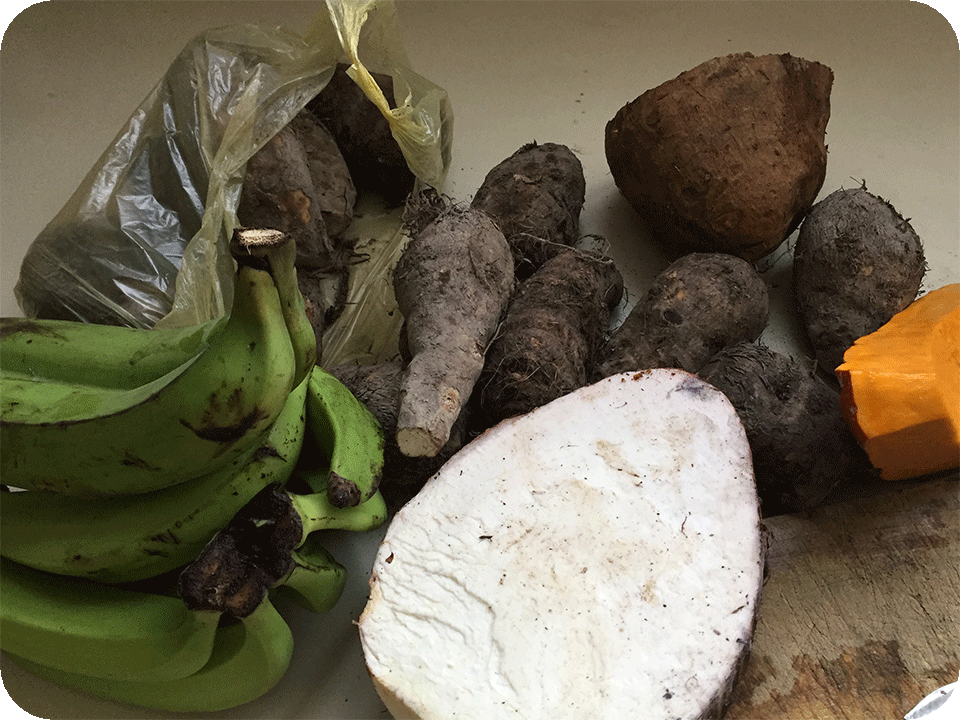 Teniendo una buena selección de tubérculos y verduras, se procede al pelado, lavado y corte de los mismos; preferiblemente en trozos medianos a grandes.
Teniendo una buena selección de tubérculos y verduras, se procede al pelado, lavado y corte de los mismos; preferiblemente en trozos medianos a grandes.
Having a good selection of tubers and vegetables, they are peeled, washed and cut, preferably in medium to large pieces.
Paso 4.
Step 4.
Limpiar, lavar, cortar y sofreír los aliños a fuego lento durante 12 minutos, manteniendo tapada la sartén para lograr una mejor concentración de aromas y sabores, sobre todo por la combinación de los ajíes dulces y ajos machacados, se les deja la concha.
Clean, wash, cut and sauté the seasonings over low heat for 12 minutes, keeping the pan covered to achieve a better concentration of aromas and flavors, especially for the combination of sweet peppers and crushed garlic, leaving the shells on.
Utensils
Preparation
Step 1.
Step 2.
Step 3.
Step 4.
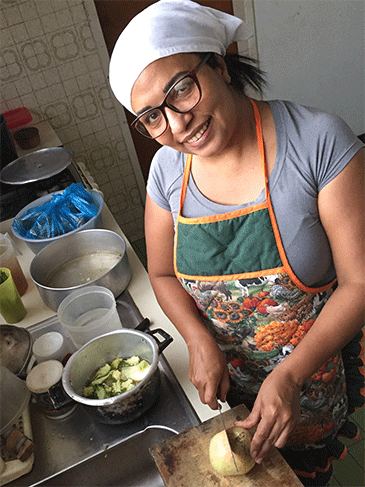
|
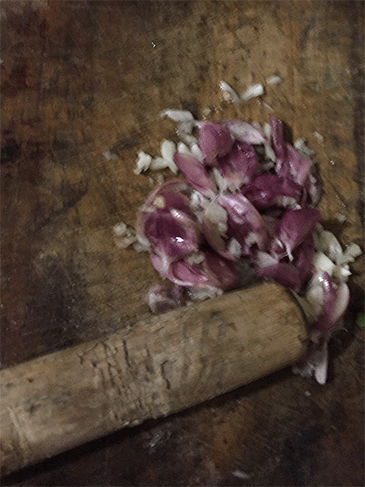
|
Paso 5.
Step 5.
Mientras hemos pelado y cortado las verduras y vegetales, así como sofrito los aliños, el agua debe haber hervido; entonces, es el momento ideal para agregar el sofrito conjuntamente con verduras y vegetales. Se deja cocinar por 35 minutos, manteniendo la olla tapada. Agregue la sal.
While we have peeled and cut the vegetables, as well as sautéed the seasonings, the water must have boiled; then, it is the ideal moment to add the sauté together with the vegetables. Let it cook for 35 minutes, keeping the pot covered. Add salt.
 El decorativo HIVE lo elaboré con hojas frescas y aromáticas de culantro, provenientes de mi pequeño cultivo en el jardín.
El decorativo HIVE lo elaboré con hojas frescas y aromáticas de culantro, provenientes de mi pequeño cultivo en el jardín.
I made the decorative HIVE with fresh and aromatic coriander leaves from my small garden.
Paso 6.
Step 6.
Una vez que la verdura esté próxima a ablandarse, es momento de agregar la carne de pescado.
Once the vegetables are about to soften, it is time to add the fish meat.
 Cabe resaltar que esta especie dulceacuícola por lo general es un poco dura, así que por esto se añade antes que la verdura se haya ablandado completamente; como puedes darte cuenta, es diferente a la preparación de otras sopas con tipos de pescado con escamas, cuyo tejido cárnico es más blando.
Cabe resaltar que esta especie dulceacuícola por lo general es un poco dura, así que por esto se añade antes que la verdura se haya ablandado completamente; como puedes darte cuenta, es diferente a la preparación de otras sopas con tipos de pescado con escamas, cuyo tejido cárnico es más blando.
It is worth noting that this sweet water species is usually a bit tough, so this is why it is added before the vegetables have completely softened; as you can see, it is different from the preparation of other soups with types of fish with scales, whose meat tissue is softer.
Paso 7.
Step 7.
Una vez que el pescado se haya cocinado por 15 minutos, se agrega el jugo de dos limones y añade unas hojas de culantro para terminar de dar el punto aromático y sabor característico de este caldo.
Once the fish has cooked for 15 minutes, add the juice of two lemons and add a few coriander leaves to finish the aromatic point and characteristic flavor of this broth.

Paso 8.
Step 8.
Habiendo esperado unos 5 minutos después de agregar el jugo de limón y hojas de culantro, este exquisito caldo de guaraguara está listo para servir y degustar.
Having waited about 5 minutes after adding the lime juice and coriander leaves, this exquisite guaraguara broth is ready to serve and enjoy.
 Esta ha sido mi experiencia respecto a la preparación de la sopa de guaraguara.
This has been my experience with the preparation of guaraguara soup.
Esta ha sido mi experiencia respecto a la preparación de la sopa de guaraguara.
This has been my experience with the preparation of guaraguara soup.
Gracias por tu atención

Sobre las fotografías
About the photographs
Todo el material fotográfico y recurso multimedia pertenece a la autora, quien utilizó cámara de dispositivo iPhone 6 para realizar las capturas; de igual manera, el editor Photoshop CS6 para la creación de la imagen principal.
La imagen de la abeja en formato PNG, se extrajo del sitio clipart de insectos png de es.pngtree.com
All the photographic material and multimedia resources belong to the author, who used the camera of an iPhone 6 device to take the pictures; likewise, the Photoshop CS6 editor was used to create the main image.
The image of the bee in PNG format was extracted from the site clipart de insectos png de es.pngtree.com
